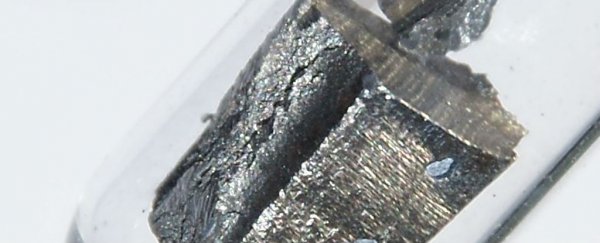Rare earth elements (REEs) are essential for the production of many modern gadgets and machines, from smartphones and solar panels, to computer chips, medical imaging, and jet engines. Despite their name, they're not particularly rare - but they are difficult to extract in large amounts, which is why scientists in the US have been investigating new ways to separate them from the byproducts of coal production.
"We have known for many decades that rare earth elements are found in coal seams and near other mineral veins," said one of the team, Sarma Pisupati from Pennsylvania State University. "However, it was costly to extract the materials and there was relatively low demand until recently… We wanted to take a fresh look at the feasibility of extracting REEs from coal because it is so abundant in the US."
That "fresh look" involved testing a chemical process known as an ion exchange to see if it would prove effective at extracting these rare earth elements from coal byproducts.
It involves rinsing the coal with a special solution that releases the REEs bound to it, which is more environmentally friendly and less demanding in terms of energy use than methods explored in the past. Quite simply, ions exchange places with one another, and thus different types of materials can be separated.
"Essentially, REEs are sticking to the surface of molecules found in coal, and we use a special solution to pluck them out," said Pisupati. "We experimented with many solvents to find one that is both inexpensive and environmentally friendly."
The discarded coal used by the Penn State team had already been marked as refuse during mining operations due to its poor quality, so it's a win for both the researchers and the mining companies.
Today, China supplies around 85 percent of the world's rare earth elements (the US is second on 6 percent) but with demand expected to grow, it's important to find new sources and more efficient methods for extracting them.
The research team was also able to identify the locations in the coal seams that were more likely to have high concentrations of REEs: namely the coal shale, or the top layer of the coal seam. This knowledge, plus the potential to increase the efficiency of the extraction process, could one day make it a genuine commercial proposition.
Ammonium sulphate was found to be the most effective solvent, but there are plenty more tests to come. "We were able to very easily extract 0.5 percent of REEs in this preliminary study using a basic ion exchange method in the lab," said Pisupati. "We are confident that we can increase that to 2 percent through advanced ion exchange methods."
The group's work has been published in Metallurgical and Materials Transactions E.
